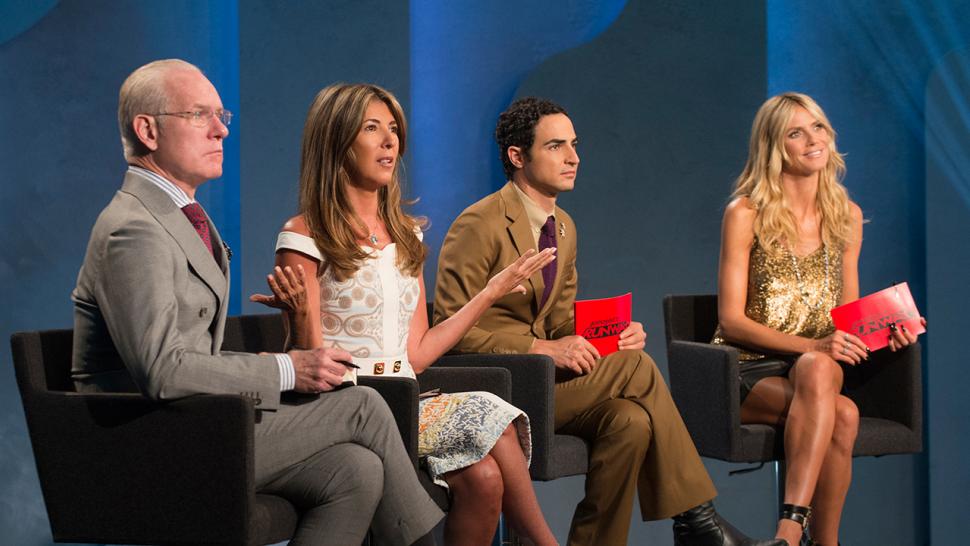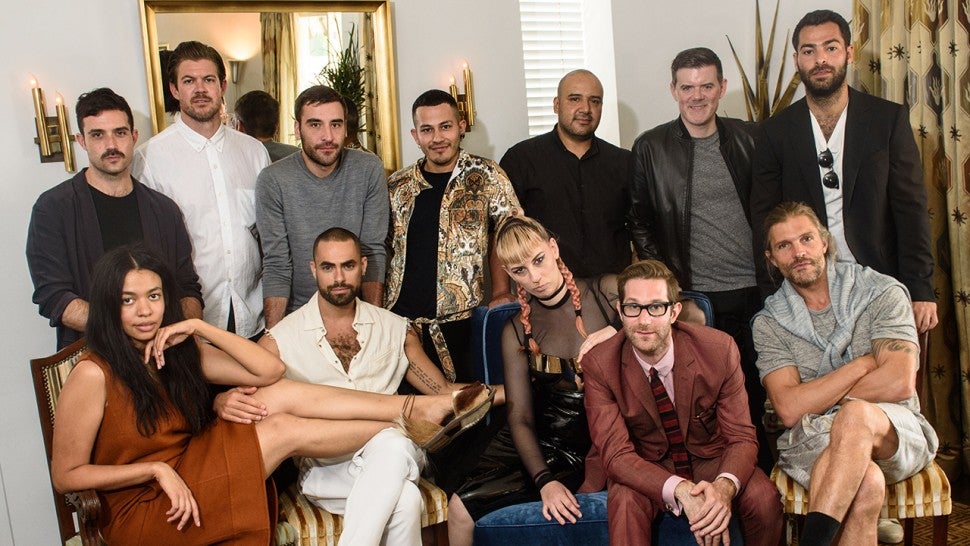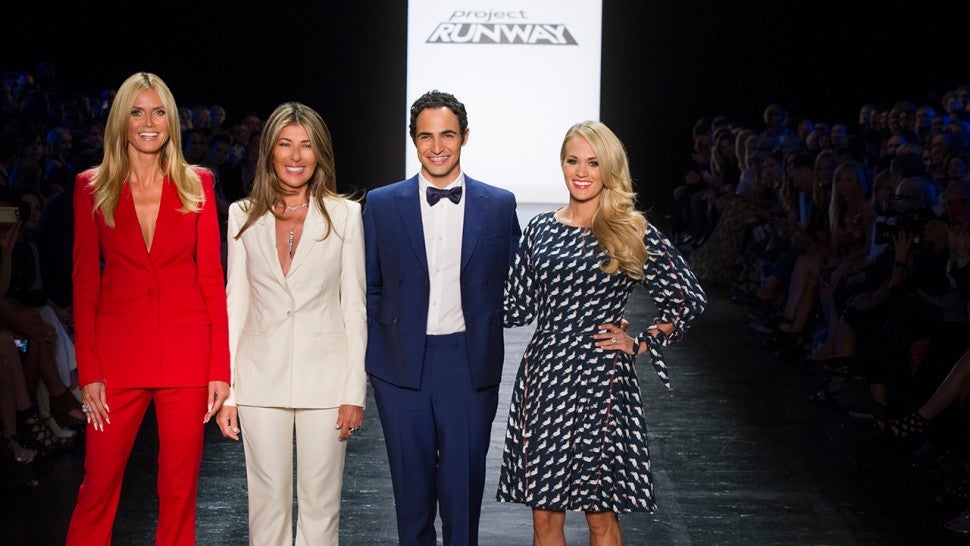5 Lessons an Aging 'Project Runway' Can Learn From Amazon's 'Fashion Fund'

Fashion will always be fascinating, as Project Runway has proven with its reality competition about
designers struggling to make it to fashion week with hopes of prominence within
the industry.
First premiering on Bravo in December 2004, Project Runway eventually switched over
to Lifetime, which recently aired its 14th season and is nearing the end of its
fifth All Stars season. The show,
which has seen its ups and downs (season 11’s team edition is still
unforgivable), has become a reliable hit, if not, uninspired in recent years.
Co-host and mentor Tim Gunn even slammed the main competition’s most recent
season, telling Entertainment Weekly he
“hated it.”
MORE: Anna Wintour on Film -- 9 Ways to Go Behind the Scenes of the 'Vogue' Editor-in-Chief's World
Then there’s The
Fashion Fund, a breath of fresh air in the waning world of reality
competitions, with its third season drawing to a close on Thursday, April 28 on
Amazon. Arguably, it’s more of a docu-series as it follows the process of
selecting a winner of the CDFA/Vogue
Fashion Fund among its ten nominees. Yet, the show still follows Project Runway’s similar format, with
each episode focusing on a specific challenge or element of the process.
Most of the joy of watching the show comes from the committee,
which includes top industry experts from Neiman Marcus, Rag & Bone, and
Nordstrom. Of course, there’s also the trifecta of exemplary judges: Anna
Wintour, Diane von Furstenberg, and Jenna Lyons. Wintour and Furstenberg, in
particular, have a funny dynamic of chiding each other in one panel discussion
and joking about getting brunch with a handsome chef in another. The committee
itself is a welcome reprieve from the mainstay of judges on Lifetime, who
sometimes offer more confusion than reliable critique. "One says it's
black, the other says it's white, and they don't really listen and they don't
really look," Gunn said of them last year.
With that said, there are plenty of lessons Project Runway could learn from The Fashion Fund, and possibly become just as fun and exciting to watch again.

1. Eliminate
Eliminations
The most refreshing part about The Fashion Fund is the lack of eliminations each week. While that
might cause fans to think there’s less at stake (and less reason to watch),
there’s still plenty at risk for the 10 competitors as they navigate various
challenges crafted by the Fund to push the limits of their designs and
business. There are still tears, there’s still judgment from the committee,
and there’s plenty of rejection. Just imagine how you would feel having Wintour
reject your design because it didn’t meet the challenge -- and telling you to
do it all over again.
2. Think Long-Term
With everyone on the show competing until the very end, the Fund has created a long-term investment
in its competitors and increased the emotions at stake for whoever wins.
(Spoiler alert: the show follows the 2015 competition and winners can be found
with a quick Google search.) Fans are following each designer every step of the
way, judging, assessing and defending each of their decisions.
Also, it puts more focus on the grand prize. In this case, the
Fund awards $400,000 to the winner and $150,000 to the two runner-ups. Imagine all
14 competitors on Project Runway each
spending the entire series working on their collections, which they all have to
show at fashion week to avoid spoiling the show’s top three. Instead of decoys,
they’re all there in the mix, vying for the win.
3. Focus on Talent Development
While The Fashion Fund
does follow some of Project Runway’s
format (there are challenges packaged for each week), it’s less about getting
rid of someone and more about pushing the designers. The Fund reviews the
designers’ stores, business models, as well as clothes and overall esthetic. Yes,
there is an Instagram challenge, but it’s framed as a marketing challenge rather
than a theme for that week’s design. Over the course of the series, some
of the designers seem to flourish, while others get caught up in what their
brand means to them.

4. Elevate Quality of
Talent and Judges
Michael Kors makes great TV. There’s no doubting that part
of Project Runway’s draw was watching him lob outrageous critiques at the
designers’ weekly outfits. Wintour, even with her scowl or disapproving nod, doesn’t
come close to him. However, she does have a level of clout and expertise that
Kors, Nina Garcia, or Heidi Klum doesn’t have. But then again, Wintour (and the
committee) is judging designers with established brands, looking to reach the
next level. Project Runway has always been about discovering the undiscovered,
but maybe like its former sister program on Bravo, it could benefit from
raising the bar of talent featured on the show. Georgina Chapman is a good
example. Her brand of high-end womenswear, Marchesa, was a Fund finalist in
2006. Now, she’s a judge on All Stars,
offering a level of credibility that host Alyssa Milano doesn’t have.
5. Cut the Fat
If there’s one major critique for Project Runway, it’s that it has become bloated in recent seasons. Now
90 minutes long, most of the show becomes filler, with not enough focus on
actual design. The Fashion Fund,
never more than 30 minutes each week, leaves little time for much else. The
episodes occasionally whip by a little too fast, but audiences are spared
sitting through unnecessary critique. What would Project Runway look like at 60 minutes or less?
Project Runway: All
Stars, which has two new episodes remaining,airs Thursdays at 9 p.m. ET on Lifetime. The Fashion Fund, which is released on Thursdays on Amazon, ends on
Thursday, April 28.